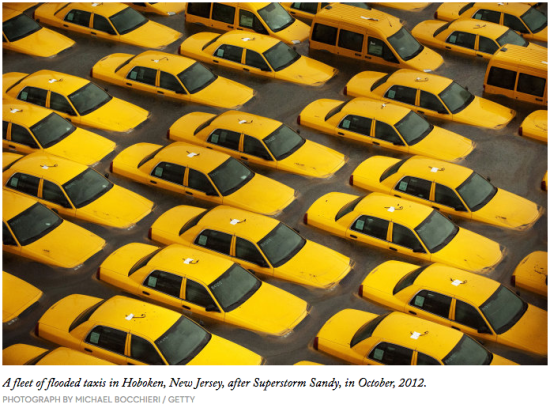
Hurricane Patricia, which hit southwestern Mexico last weekend, was the largest recorded hurricane to make landfall off the Pacific, but it was not the only historic storm this October. At the beginning of the month, a tropical weather system formed southwest of Bermuda and intensified into a Category 4 hurricane, with heavy rain and surface winds reaching a hundred and fifty-five miles per hour. Meteorologists called it Joaquin, and predicted that the dangerous storm would soon turn northeast. According to their models, New York City and the surrounding coastal region fell directly within the “cone of uncertainty” where Joaquin could make landfall. New York Governor Andrew Cuomo activated the State Emergency Operations Center, and New Jersey Governor Chris Christie declared a state of emergency, warning that major flooding events were likely. No one wanted to be caught unprepared. (Joaquin did turn out to be lethal and devastating–but in South Carolina, where it joined with other storms to cause severe flooding and fifteen deaths, and in the Bahamas, where it slammed several islands and sank a cargo ship, killing all thirty-three of its crewmembers.)
One clear consequence of Superstorm Sandy, which struck the New York City area in 2012, is that everyone, even climate-change deniers, takes planning for extreme weather events more seriously. … Read more